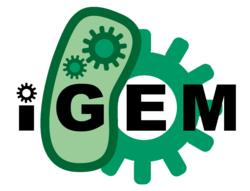Team:METU/test/KillSwitchOverview
From 2012.igem.org
(Difference between revisions)
| (2 intermediate revisions not shown) | |||
| Line 165: | Line 165: | ||
<div class="shell"> | <div class="shell"> | ||
<div class="slider-holder2"> | <div class="slider-holder2"> | ||
| - | <h1> | + | <h1>CODH</h1> |
<div class="cl"> </div> | <div class="cl"> </div> | ||
| Line 173: | Line 173: | ||
<!-- End Slider --> | <!-- End Slider --> | ||
<!-- Main --> | <!-- Main --> | ||
| - | |||
<div id="main"> | <div id="main"> | ||
<div class="shell"> | <div class="shell"> | ||
<div class="col2"> | <div class="col2"> | ||
| - | + | <!-- Overview --> | |
| + | <div id="Overview"> | ||
<h2>Overview</h2> | <h2>Overview</h2> | ||
| - | + | <span> | |
| - | + | <p> | |
| - | <p> | + | BURAYA BIRSEYLER YAZILACAK. |
| - | + | </p> | |
| - | + | </span> | |
| - | + | <h2>How the System Works?</h2> | |
| - | + | <p> | |
| - | </p> | + | BURAYA BIRSEYLER YAZILACAK. |
| - | + | </p> | |
| - | </span> | + | <p> |
| - | + | <img src="" alt=""/> | |
| - | + | </p> | |
| - | + | </div> | |
| - | + | <!-- End of Overview --> | |
| - | + | <!-- Modelling --> | |
| - | + | <div id="Modelling"> | |
| - | + | <h2>Modelling</h2> | |
| - | + | <span> | |
| - | + | <p> | |
| - | + | BURAYA BIRSEYLER YAZILACAK. | |
| - | + | </p> | |
| - | + | </span> | |
| - | + | </div> | |
| - | + | <!-- End of Modelling --> | |
| - | + | <!-- Results --> | |
| - | + | <div id="Results"> | |
| - | + | <h2>Results</h2> | |
| - | + | <span> | |
| - | + | <p> | |
| - | + | BURAYA BIRSEYLER YAZILACAK. | |
| - | + | </p> | |
| - | + | </span> | |
| - | + | </div> | |
| - | + | <!-- End of Results --> | |
| - | + | <!-- Biobricks --> | |
| - | + | <div id="Biobricks"> | |
| - | + | ||
| - | + | ||
| - | </ | + | |
| - | + | ||
| - | < | + | |
| - | + | ||
| - | < | + | |
| - | + | ||
| - | + | ||
| - | + | ||
| - | + | ||
| - | + | ||
| - | + | ||
| - | + | ||
| - | + | ||
| - | + | ||
| - | + | ||
| - | + | ||
| - | + | ||
| - | + | ||
| - | + | ||
| - | + | ||
| - | + | ||
| - | + | ||
| - | + | ||
| - | + | ||
| - | </div> | + | |
| - | + | ||
| - | + | ||
| - | + | ||
| - | + | ||
| - | + | ||
| - | + | ||
| - | + | ||
| - | </div> | + | |
| - | + | ||
<h2>Biobricks</h2> | <h2>Biobricks</h2> | ||
<span> | <span> | ||
<p> | <p> | ||
| - | + | BURAYA BIRSEYLER YAZILACAK. | |
</p> | </p> | ||
</span> | </span> | ||
| Line 261: | Line 225: | ||
</div> | </div> | ||
</div> | </div> | ||
| + | <!-- End of Biobricks --> | ||
| + | |||
| + | </div> | ||
| + | </div> | ||
| + | |||
<!-- End Main --> | <!-- End Main --> | ||
| Line 268: | Line 237: | ||
<p class="left">Copyright © 2010 RightDirection. All rights reserved. Designed by <a href="http://chocotemplates.com" target="_blank" title="The Sweetest CSS Templates WorldWide">Chocotemplates.com</a></p> | <p class="left">Copyright © 2010 RightDirection. All rights reserved. Designed by <a href="http://chocotemplates.com" target="_blank" title="The Sweetest CSS Templates WorldWide">Chocotemplates.com</a></p> | ||
<p class="right"> | <p class="right"> | ||
| - | <a href=" | + | <a href="https://igem.org/Team.cgi?year=2012&team_name=METU">METU IGEM 2012</a> |
| - | + | ||
| - | + | ||
| - | + | ||
| - | + | ||
| - | + | ||
| - | + | ||
| - | + | ||
| - | + | ||
| - | + | ||
| - | + | ||
| - | + | ||
| - | + | ||
</p> | </p> | ||
<div class="cl"> </div> | <div class="cl"> </div> | ||
Latest revision as of 17:49, 23 September 2012
Overview
BURAYA BIRSEYLER YAZILACAK.
How the System Works?
BURAYA BIRSEYLER YAZILACAK.
Modelling
BURAYA BIRSEYLER YAZILACAK.
Results
BURAYA BIRSEYLER YAZILACAK.
Biobricks
BURAYA BIRSEYLER YAZILACAK.
 "
"

